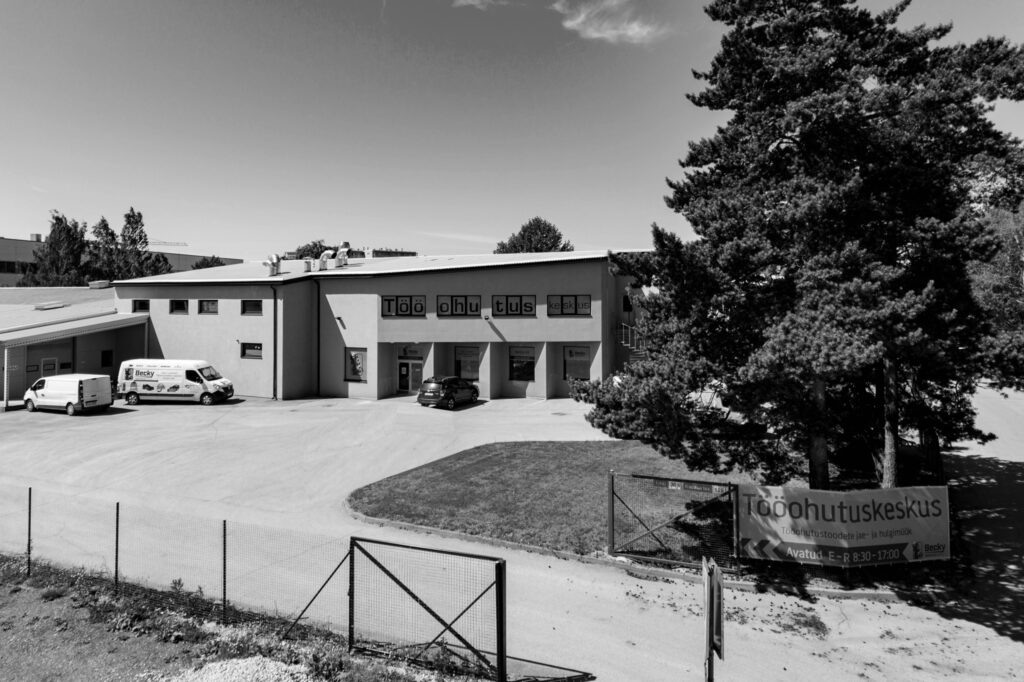WHICH MASK TO USE TO PROTECT AGAINST THE FLU VIRUS?

Protective masks do not only protect us from dangerous volatile particles, gases and vapours, but also protect the wearer from viruses. Similarly, if a person is infected with a virus, wearing a mask can prevent them from spreading the germs and infecting people around them. Read more about which mask to use to protect yourself from the flu virus.
It is undoubtedly true to say that a face-moulded respirator offers better protection than a ‘normal’ medical or surgical mask made of paper/cloth, and is in turn more effective than a handkerchief or scarf. However, it is not known how well one or the other mask protects, as even the same type of mask usually comes in several different variations.
The main function and protective principle of a mask is to filter the air that is inhaled and/or exhaled. Consequently, there are two main parameters that characterise masks: filtration direction and filtration efficiency. It is known that viruses have a diameter of 0.01…0.3 μm and influenza viruses have a diameter of 0.08…0.12 μm, which is about 1/100th of the bacterial size (0.5…10 μm). The choice of mask depends to a large extent on the purpose, i.e. whether the wearer wants to protect only himself or also other fellow citizens (patients, colleagues, family members) from airborne particles, including bacteria and viruses.
If you want to protect yourself from airborne viruses, it makes sense to choose respirators with an exhaust valve. The flap allows the exhaled air to escape virtually unobstructed, thus greatly facilitating prolonged use of the mask and avoiding moisture build-up in the mask. Such masks are widely used in industry and construction. It should be borne in mind that a respirator equipped with a high filtration index exhaust valve only protects the user and does not prevent the spread of infection if the respirator user has become ill.
Not all masks provide the same protection. Different masks are made for different purposes and their protective performance (effectiveness) can be roughly assessed by measuring the percentage of particles, however small, that remain in the mask filter.
Masks with a filtration index of FFP2, which means that the mask filters out 95% of particles 0.3 μm or more in diameter, are considered to be very good.
What distinguishes an FFP2 mask from a normal (surgical) mask? One of the main differences is that the material of a conventional surgical mask has larger pores and offers less protection against small particles of viral size. This is not surprising, as the main purpose of a surgical mask is to protect the user and the patient mainly from bacterial infection. The FFP2 mask may be very similar in shape to a surgical mask, but it is designed to ensure better contact with the wearer’s face. In most cases, FFP2 masks are equipped with a soft metal clip on the upper (nose) part of the mask to mould the upper part of the mask to the shape of the nose.
When using a protective mask, make sure that the mask is fitted correctly:
- Cover the mask with both hands.
- Breathe in quickly and deeply. If the mask is fitted correctly, you should feel low pressure inside the mask. If you feel air coming in from under the edges of the mask, adjust the length of the straps.
- Repeat the test until you are sure that the mask really protects you.
- Using an incorrectly fitted mask will not provide protection.
- For men: the mask wearer must be clean-shaven, otherwise the edges of the mask will not come into close contact with the skin and the mask will be ineffective as a protective device.
View a list of all Becky Tööohutuskeskus` respirators and protective masks HERE!
MARKINGS OF RESPIRATORS AND PROTECTIVE MASKS
A protective mask without a standard marking also provides protection, but its filtration efficiency has not been determined in standardised tests. The filtering index symbol indicates that the protective performance of a particular mask has been determined in standardised tests.
Common Mask Symbols (US Standardized):
- N95 Filters at least 95% of airborne particles. Not resistant to oil.
- N99 Filters at least 99% of airborne particles. Not resistant to oil.
- N100 Filters at least 99.97% of airborne particles. Not resistant to oil.
- R95 Filters at least 95% of airborne particles. Although more resistant to oil.
- P95 Filters at least 95% of airborne particles. Resistant to oil.
- P100 Filters at least 99.97% of airborne particles. Resistant to oil.
Symbols of European standard EN149:
- FFP1 Filters out particles generated by mechanical processes (dust mask).
- FFP2 Corresponds to US code N95.
- FFP3 Corresponds to US code N99.
Symbols used in Australia:
- P1 Filters out particles generated by mechanical processes (dust mask).
- P2 Corresponds to US code N95.
HOW LONG DOES THE VIRUS THAT CAUSES COVID-19 LAST ON SURFACES?
Reference:
- WHO: https://www.who.int/emergencies/diseases/novel-coronavirus-2019/advice-for-public/myth-busters










Follow us on social media:
Join our mailing list! Sign up to receive email updates on new products, special offers and more.